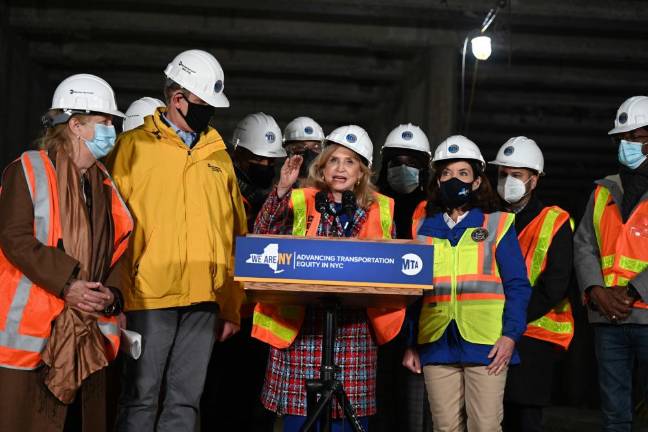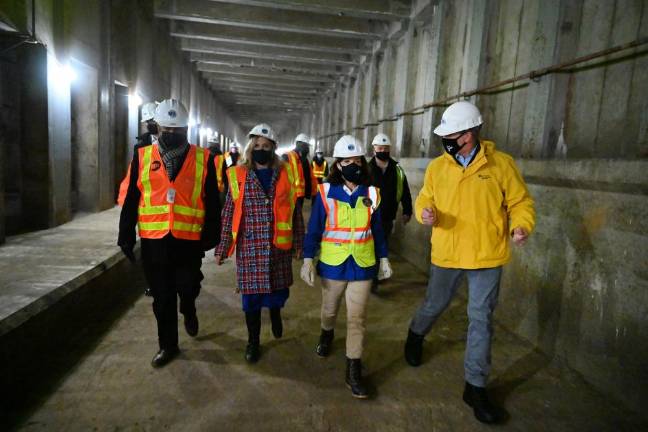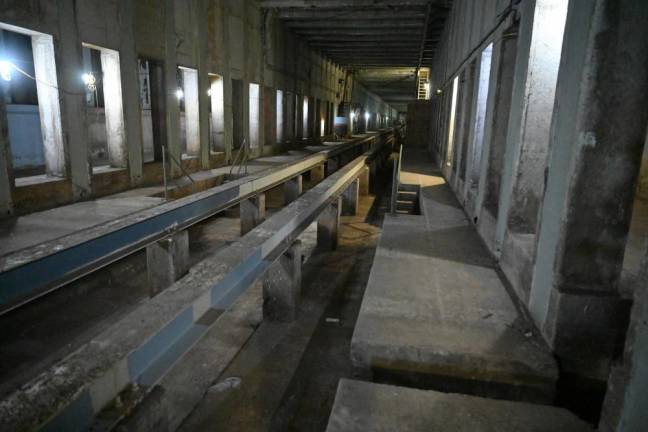A Tunnel Tour With Hochul
The governor hopes infrastructure funding will help build the extension of the Second Avenue subway - and benefit the East Harlem community



Congress and President Biden have signed off on spending a trillion dollars on construction and reconstruction of, as they say, crumbling infrastructure. It’s a huge amount of money, but what remains to be decided is specifically what all that money will be spent on.
Which is why Governor Kathy Hochul, Representative Carolyn Maloney, Manhattan Borough President Gale Brewer and other leaders took themselves for an adventure through a long abandoned tunnel under East Harlem.
The abandoned tunnel is a powerful reminder of one of New York’s city’s previous traumas, the 1975 fiscal crisis. It was dug as part of a plan for a Second Avenue subway line that would run from the Bronx through Harlem and down the East Side.
The project was dropped when the city couldn’t pay its daily bills, let alone take on debt for this new effort. Departed Governor Andrew Cuomo restarted the Second Avenue project and got it built up to 96th Street.
That still left the unfinished tunnel further uptown, where it has sat untraversed from 110th Street to 120th Street for nearly half a century.
Which is where the new infrastructure money comes in.
“Expanding the Second Avenue Subway has been talked about for decades, and thanks to the billions of dollars coming to New York in the infrastructure package, we can finally stop talking and start doing,” said Janno Lieber, the acting chair of the Metropolitan Transportation Authority. “The MTA is ready to move forward on this project that will greatly benefit East Harlem, an underserved community that heavily relies on mass transit to get to work and school. It will also alleviate congestion on the Lexington Avenue Line, which serves more riders daily than Boston, Chicago and San Francisco’s rail systems combined.”
Easier Access
The line would extend north from 96th Street, with stops at 106th Street, 116th Street and Second Avenue and at 125th Street and Park Avenue, where it would connect to the Lexington Avenue Subway and to the Harlem station of Metro North, creating easier access for passengers from the Bronx, Westchester and Connecticut.
The visit to the tunnel had all the trappings and feel of an announcement. But it was actually more of a messaging, or lobbying, event.
What the governor and her guests were actually announcing was a request to the Federal Transit Administration to send some of that infrastructure money to build this phase two of the Second Avenue subway.
“The Infrastructure Investment and Jobs Act signed by President Joe Biden provides $23 billion in new grant opportunities for transit expansion, a historic level of funding that doubles the amount of grants available for major projects like Phase 2 of the Second Avenue Subway,” the governor’s announcement explained.
The interregnum between the passage of the infrastructure act and the execution of specific projects has created an odd moment with lots of enthusiasm for what should be done, but no official clarity on what will be done.
The New York Times even ran a story describing the many projects that “could” be funded, from the second avenue subway and the covering of parts of the Cross Bronx Expressway, to a proposal “to plant trees and rain gardens, and improve street drainage along East 106th Street and First, Second and Third Avenues.”
In politics there is always a gap between could and will. Here especially there is widespread recognition that the list of deferred projects is far longer than even the expanded funding will support.
What falls off the bottom of the list won’t get the same exciting treatment as the visit to the empty East Harlem subway tunnel. The message to the federal government of that visit was that New York’s political establishment was all lined up behind finishing the Second Avenue subway, so let’s get on with it.
Or as newly-elected State Senator Cordell Cleare phrased it: “Finally making this old promise come true and vastly improving the lives of those in the Harlem community.”
The visit to the tunnel had all the trappings and feel of an announcement. But it was actually more of a messaging, or lobbying, event.